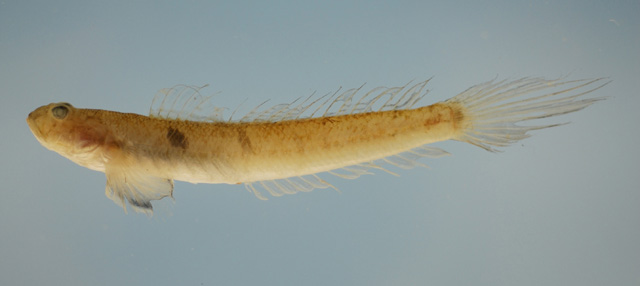| Gobiidae (Gobies), subfamily: Gobionellinae |
| 27 cm TL (male/unsexed); max.weight: 73.3 g |
|
demersal; freshwater; brackish; marine, amphidromous |
| Western Atlantic: USA (Virginia) to southern Brazil; occasionally taken as far north as Great Bay estuary, New Jersey; including Mississippi Sound, Gulf of Mexico off Port Aransas, Texas; the muddy coast of French Guiana and especially common along the lower Cayenne River. |
|
Dorsal spines (total): 7-7; Dorsal soft rays (total): 12-14; Anal spines: 1-1; Anal soft rays: 13-14. This species differs from its congeners by the following characters: mouth terminal and oblique; most distinct pigmentation, a large blotch on trunk located anterodorsally beneath pectoral fin; opercle with a triangular patch; pectoral-fin base with a blotch; second dorsal-fin 14 elements, anal fin with 15 elements; dorsal fins separate; adults with small ctenoid scales covering trunk and nape, 57-89 scales in a lateral series; upper jaw with several rows of teeth; first gill arch with 8 thin rakers on ceratobranchial, 1at the angle, and 6 or 7 on epibranchial (Ref. 55435). |
| Adults are found on shallow mud or mud-sand bottoms in turbid and generally brackish water near estuaries (Ref. 13628). Also encountered in weedy backwaters (Ref. 7251) and hyper-saline waters (Ref. 13628) with salinity ranging from 0.15 to 37.2 ppt (Ref. 97140). |
|
Least Concern (LC); Date assessed: 16 August 2018 Ref. (130435)
|
| harmless |
|
Source and more info: www.fishbase.org. For personal, classroom, and other internal use only. Not for publication.

